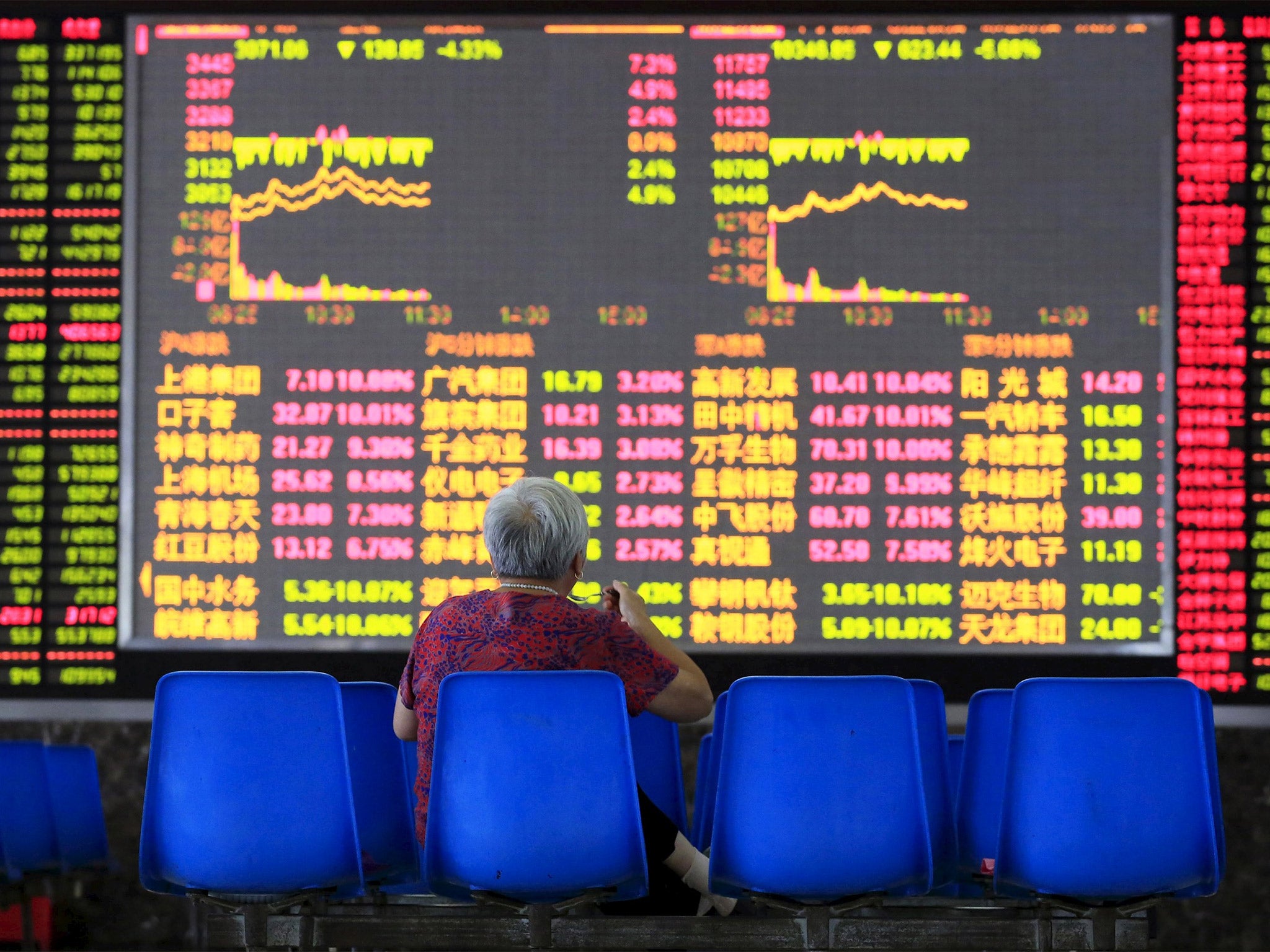China has exposed the fatal flaws in our liberal economic order
The country is no longer able to help keep the Western capitalist patients alive, partly because it is now also a victim


Your support helps us to tell the story
From reproductive rights to climate change to Big Tech, The Independent is on the ground when the story is developing. Whether it's investigating the financials of Elon Musk's pro-Trump PAC or producing our latest documentary, 'The A Word', which shines a light on the American women fighting for reproductive rights, we know how important it is to parse out the facts from the messaging.
At such a critical moment in US history, we need reporters on the ground. Your donation allows us to keep sending journalists to speak to both sides of the story.
The Independent is trusted by Americans across the entire political spectrum. And unlike many other quality news outlets, we choose not to lock Americans out of our reporting and analysis with paywalls. We believe quality journalism should be available to everyone, paid for by those who can afford it.
Your support makes all the difference.How can we make sense of volatile global stock markets? Economists explained this week’s dramatic falls by pinning responsibility on China. They are at pains to assure us this is not 2008 all over again. I beg to disagree.
Even though data is not reliable, it appears that China is slowing down. By 2009, the Chinese authorities were embracing the Western economic model that had just brought down much of Western capitalism. Undeterred, they launched a massive credit-fuelled investment programme. Growth soared at 10 per cent per annum. Investment recently peaked at an extraordinary 49 per cent of GDP. Total debt (private and public) rocketed to 250 per cent of GDP – up 100 points since 2008, according to the IMF. Property and other asset markets boomed, as did consumption. The Chinese should have been warned, for they won accolades from Western economists for their “Goldilocks” economy.
China’s stimulus helped keep the global economy afloat in the years following. But there are economic, ecological, social and political limits to a developing country like China continuing to support richer economies. And there are limits to Beijing’s willingness to abandon control and adopt in full the Western neoliberal economic model; the Communist Party has begun intervening. It is this intervention, we are led to believe, that spooked global markets.
Yet the real reason for global weakness lies elsewhere – in the Western neoliberal economic model itself, which lay behind the global financial crisis of 2007-9. Financial and trade liberalisation, privatisation of taxpayer-financed assets, excessive private indebtedness and wage repression constituted an explosive economic formula and blew up the Western banking system.
That model has not undergone even superficial change since 2009. On the contrary: economists and financiers used the “shock and awe” generated by the crisis to buttress the model.
The crisis had its origins in banks suffering severe bouts of debt intoxication. Like alcohol addicts, they could not be treated effectively until admitting to the problem: the flawed liberal. financial and economic order.
Yet neither the private finance sector nor central bankers and their political friends were willing to admit to the cause of the disease. Instead, central bankers rushed to offer life support in the form of quantitative easing (QE) to private banking systems in the UK, Japan and the US.
In the eurozone, central bankers showed less compassion than the Fed towards their patient after the crisis. ECB governor Jean-Claude Trichet raised interest rates in 2011, which led to the economy contracting deeply. In March 2015 the ECB belatedly offered life support to the eurozone in the form of QE – but only after demand had collapsed, deflation taken hold and unemployment risen to unforgivably high levels. The treatment for market failure was more easy money: QE, low interest rates and taxpayer-backed guarantees for the finance sector. Very little was done to ease the debt addiction, or to operate on and remove the associated growth of private debt that afflicted most capitalist economies. On the contrary: since the crisis the affliction has spread and the global economy has added another $57 trillion of debt.
Last year, the US’s Federal Reserve halted QE. The patients – the US economy and its suppliers – have since showed signs of weakness. China and other emerging economies are sharing the pain. In a globally connected economy, financial and trade traffic flows in two directions.
The global economy is suffering a deficiency of demand and the threat of deflation, thanks largely to austerity, debt and wage repression. This signals a debt-deflationary period, and the probability of another systemic banking failure.
This year the Fed proposes to introduce higher interest rates. Many economists and analysts (although not this author) believe that rates could rise as soon as 17 September, when the Fed’s Open Market Committee next meets. Markets are now panicking at the prospect of what further damage a rate rise will do to the fragile recovery. And China is no longer willing or able to help central bankers keep the Western capitalist patients alive, partly because it, too, is now a victim of that same model.
So, I beg to differ with the equanimity of economists analysing this week’s stock market volatility. Because of the failure to deal with the causes of financial crises, the global economy will not quickly recover – and may even collapse again.
Ann Pettifor is the director of Prime (Policy Research in Macroeconomics)
Join our commenting forum
Join thought-provoking conversations, follow other Independent readers and see their replies
Comments